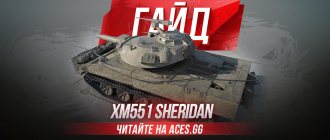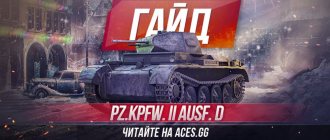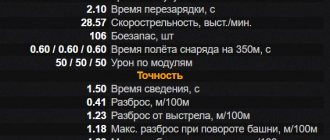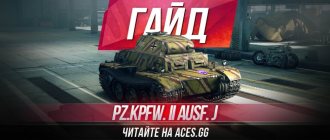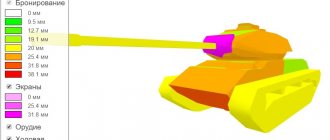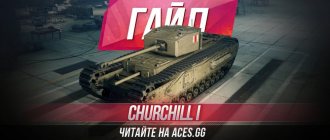Type of light tank
| Light tank, T1 | |
| Light tank T1E1 | |
| Type | Light tank |
| Place of origin | United States |
| Service history | |
| In service | Prototype only |
| Used | USA |
| Production history | |
| Designer | US Army, Ordnance Department |
| Designed by | 1927 |
| Manufacturer | James Cunningham, Son & Company (Rochester, NY) |
| Produced | Only prototypes from 1927–1932. |
| Options | Prototype T1, T1E1, T1E2, T1E3, T1E4, T1E5, T1E6 |
| Characteristics | |
| Weight | T1: 7.5 short tons (6.8) T1E1: 8.3 short tons (7.5) 4.62 without modules T1E2: 8.9 short tons (8.1 t) T1E3: 8.5 short tons ( 7.7 t) T1E4: 8.6 short tons (7.8 t) T1E6: 9.95 short tons (9.03 t) |
| Length | T1: 12 ft 6 in (3.810 m) T1E1, T1E2, T1E3: 12 ft 8 1 ⁄ 2 in (3.874 m) T1E4: 15 ft 5 in (4.699 m) |
| Width | T1, T1E1, T1E3: 5 ft 10 1 ⁄ 2 in (1.791 m) T1E2: 6 ft 2 in (1.880 m) T1E4: 7 ft 2 3 ⁄ 4 in (2.203 m) |
| Height | T1: 7 ft 1 1/2 in (2.172 m) T1E1, T1E3: 7 ft 1 5/8 in (2.175 m) T1E2: 7 ft 6 1/2 in (2.299 m) T1E4: 6 ft 6 3/4 in (2.000 m) |
| Crew | Two (commander/gunner, driver) |
| Armor | T1, T1E1: 6.4 - 9.5 mm (0.25 - 0.375 inch) T1E2, T1E3, T1E4: 6.4 - 15.9 mm (0.25 - 0.625 inch) T1E6: 9.5 - 15, 9 mm (0.375–0.625 in) |
| Main weapons | T1, T1E1: M1918 37mm short gun T1E2, T1E3: Browning 37mm long semi-automatic gun T1E4, T1E6: M1924 37mm semi-automatic gun T1HMC: M1howitzer 75mm gun |
| Secondary weapons | .30 caliber (.30-06 Springfield) M1919 Browning machine gun (coaxial) |
| Engine | Gasoline with water cooling. Most T1 variants: Cunningham V8. T1E6: American-LaFrance V12. T1: 105 hp (78 kW) T1E1: 110 hp (82 kW) T1E2, T1E3: 132 hp (98 kW) T1E4, T1E5: 140 hp (100 kW) T1E6: 244 hp (182 kW) |
| Suspense | T1, T1E1, T1E2: Equalizers with four two-wheel bogies, no springs T1E3: Coil springs with four two-wheel bogies T1E4, T1E6: Semi-elliptical leaf springs with two articulated four-wheel bogies |
| Operating range | T1: 65 miles (105 km) T1E2, T1E3: 75 miles (121 km) |
| Maximum speed | T1: 20 mph (32 km/h) T1E1: 18 mph (29 km/h) T1E2: 16 mph (26 km/h) T1E3: 21.9 mph (35.2 km/h) h) T1E4, T1E6: 20 mph (32 km/h) hour) |
Light tank, T1
was a United States Army light tank from the late 1920s and early 1930s that was built only in prototype form. The tank was an army design built by James Cunningham, Son and Company. Introduced in 1927, it was developed until 1932 as a series of modified versions (T1E1, T1E2, T1E3, T1E4, T1E5 and T1E6). The tank was never mass produced and was never used in combat.
Design and options [edit]
The initial T1 prototype shown here with a wooden dummy turret.
Tank T1E1. T1E2, equipped with the old M1916 gun. T1E3 with Browning long gun. Central turret T1E4. T1E6, built by adding a larger V12 engine to the T1E4. Most versions of the T1 series light tanks had the same basic layout: the engine was located at the front, and the turret, transmission and final drive were located at the rear. The exceptions were the T1E4 and T1E6, which moved the turret to the middle, the engine to the rear, and the transmission and final drive to the front, a configuration similar to later tanks. All versions of the T1 had a manually moved turret armed with a 37 mm (1.46 in) main gun and a coaxial .30 caliber (7.62 mm) M1919 Browning machine gun, and all carried a two-man crew: the commander, who sat inside the Tower and the guns were working, and the driver sat directly in front of the tower.
T1 prototype
was built in 1927. Its main weapon was the M1918 37 mm short-barreled gun, an American version of the French World War I infantry support gun. It was a relatively low-velocity weapon with a muzzle velocity of 1200 units. ft/s (370 m/s). The tank's armor thickness ranged from 0.25 in (6.4 mm) to 0.375 in (9.5 mm), and the tank's overall weight was 7.5 short tons (6.8 metric tons). It was powered by a water-cooled Cunningham V8 petrol engine producing 105 hp. (78 kW), giving it a top speed of 20 mph (32 km/h). The gearbox, made by Cotta, was a sliding type with three forward gears and one reverse gear. After evaluation of the prototype, it was stripped down to its chassis, which was reused to test other types of vehicles. [1] [2] [3]
The T1 prototype was followed in 1928 by the very similar T1E1
.
Four of these were built, making the T1E1 the only version of the T1 that was not built as a single prototype. The T1E1 was briefly standardized for production as the Light Tank, M1
, but was abandoned after a couple of months. The T1E1 had a few minor changes over the T1: the hull no longer protruded forward from the tracks, and the fuel tanks were moved above the tracks. Top speed was reduced to 18 mph (29 km/h). [4] [5] [6]
Next version, T1E2
, was built in 1929 as a single prototype. It had heavier armor, ranging from 0.25 in (6.4 mm) to 0.625 in (15.9 mm), and the tank's weight increased to 8.9 short tons (8.1 metric tons). The Cunningham V8 engine power was increased to 132 hp. (98 kW), which gave the T1E2 a slightly higher power-to-weight ratio than its predecessors; despite this, the top speed was only 16 mph (26 km/h) due to changes in gear ratios. The 37 mm gun was replaced with a long-barreled Browning semi-automatic gun having a much higher muzzle velocity of 2,000 ft/s (610 m/s), although the older M1918 model was later reinstalled. [5] [7] [8]
In 1930, the Ordnance Department modified one of the T1E1 tanks to create the T1E3.
. In some ways it was a hybrid of T1E1 and T1E2; it had a high-velocity long-barreled Browning gun, thicker armor, and a more powerful engine than the T1E2, but retained the T1E1's hull, turret, dimensions, and transmission ratios. The T1E3 weighed 8.5 short tons (7.7 metric tons). Because it had the more powerful T1E2 engine and T1E1 gearing, this gave it a higher power-to-weight ratio and greater speed than any previous T1 version, with a top speed of 21.9 mph (35.2 km/h). However, the most important feature of this version was the suspension, which was completely redesigned. All previous versions of the T1 had a completely unsprung suspension that used multiple equalizer links between the bogies to distribute shock from rough terrain. It still made for a very rough ride. The T1E3's suspension had coil springs and hydraulic shock absorbers, and its ride was much smoother. [5] [9] [10]
T1E4
, introduced in 1932, was another modification of the T1E1 tank. However, its transformation was much more radical, since the layout of the vehicle was completely changed. The engine was moved to the stern, the transmission and main gear were moved forward, and the turret was moved to the middle of the hull. At 15 ft 5 in (4.70 m) long, the T1E4 was again almost a quarter longer than previous versions of the T1. The T1E4 also received a new suspension, in this case using semi-elliptical springs and an articulated four-wheel bogie. (This suspension was similar to that of the British Vickers 6-Ton light tank that the Army had recently tested.) The main gun was replaced by the M1924 37 mm semi-automatic cannon, whose muzzle velocity of 1,350 feet per second (410 m/s) was lower than the long-barreled one. Browning. in T1E2 and T1E3. The armor thickness was similar to the T1E2 and T1E3. The T1E4 had a gross weight of 8.6 short tons (7.8 metric tons). At first, the T1E4 retained the engine from the T1E1, but it was not powerful enough, so it was replaced with an improved Cunningham V8 producing 140 hp. (104 kW), which gave the T1E4 a top speed of 20 mph (32 km/h). hour). [11] [12] [13]
T1E5
, introduced around the same time as the T1E4, was another conversion of the T1E1, in this case with a new steering system. All previous versions of the T1 used a simple brake and clutch steering system, resulting in a loss of power when cornering. The T1E5 replaced this with a controlled differential steering system from the Cleveland Tractor Company (called the "Cletrac" system). The engine was also replaced with the same 140 hp version. (104 kW), as on T1E4. Tests showed that controlled differential steering was clearly superior to the clutch and brake system, and the Ordnance Department recommended its use for all tracked vehicles that could exceed six miles per hour (ten km/h). [14]
Latest version of T1 released, T1E6
, was introduced in 1932 as a further redesign of the T1E4. The Cunnigham V8 engine was replaced with a 244 hp (182 kW) V12 engine produced by American-LaFrance and Foamite Corporation. Although the tank's weight increased to 9.95 tonnes (9.03 t), the more powerful engine gave it the best power-to-weight ratio of the entire T1 series. However, the top speed was still 20 mph (32 km/h), and the larger V12 engine heavily clogged the engine bay, making servicing difficult. T1E6 retained T1E4 armament; the maximum armor thickness remained unchanged, but the minimum thickness increased from 0.25 in (6.4 mm) to 0.375 in (9.5 mm). [15] [16]
History of creation
In the 1950s, the leadership of the German armed forces, the Bundeswehr, realized the need to replace the American M47 and M48 tanks. These vehicles could no longer compete with the latest Soviet tanks, and the Cold War required effective and quick solutions. As a result, in 1956, Germany and France decided to begin joint work on the construction of a new tank, which in German documents received the name Standard-Panzer, that is, a standard tank. The requirements for the car were formulated by 1957, and engineers began working on it.
The Germans and French did not care much about interaction, and it was not profitable for the military of both countries, so in fact, two standard tanks were in development at once. In 1963, France stopped joint work and began working separately on the AMX-30, while German designers continued their own Leopard 1 project.
The leopard was supposed to combine combat power, mobility and armor protection. Initially, the vehicle was supposed to weigh like a medium tank, with a gun of at least 105 millimeters, that is, like a heavy vehicle. Later this concept was called the main tank. When creating the Leopard 1 tank, priority was first given to mobility and combat power, sacrificing security, but in the future they quickly made up for lost time.
In 1963, the first prototypes of the new tank were tested, and Krauss-Maffei received an order for the first fifteen hundred vehicles. Serious production began a year later, so the customer received the first Leopard in September 1965. But then the tank began to be actively produced, modified and offered for sale in other countries.
Links[edit]
- Hunnicutt, pp. 40-41
- Jones et al., pp. 162
- AGF Board No. 2, page 33
- Hunnicutt, pp. 41-44
- ^ a b c Jones et al., p. 164
- AGF Board No. 2, page 35
- Hunnicutt, pp. 45-48
- AGF Board No. 2, page 39
- Hunnicutt, page 49
- AGF Board No. 2, page 43
- Hunnicutt, page 50
- Jump up ↑
Jones et al., Pp. 164, 166 - AGF Board No. 2, page 57
- Hunnicutt, page 51
- Hunnicutt, pp. 52-53
- AGF Board No. 2, page 59
- "Tank Profile". Preservedtanks.com
. December 2008. Retrieved July 9, 2015. - "Surviving Rare Pre-1945 US Tanks" (PDF). May 14, 2015. p. 2. Retrieved July 9, 2015.
T1 Cunningham in game
Research and leveling
The tank is available in the hangar from the very beginning of the game. Almost all research is carried out over several battles, so first of all explore the module leading to the tank of interest, and then, if you want to ride T1 more, everything else.
Combat effectiveness
T1s have excellent speed and maneuverability for a first-tier tank (although they are also good compared to other tanks), and a weak gun that takes a long time to aim. In patch 0.6.4. a new weapon was added - the 20mm Hispano-Suiza Birgikt gun automatic cannon. It fires 5 (!) charges at a time, and is quite accurate. With its installation, T1 becomes more dangerous for the enemy than it was before. Surely, you will quickly forget Cunningham by moving on to other tanks - few people continue to play the initial tanks after studying the next ones in the branch. But T1 found another use besides dying in low-level battles - to shine in championships with points restrictions. For example, in the last “Ural Steel”, the teams of the 6/60 division counted every point, and the VK1602 Leopard, A-20 or M5 Stuart required as many as 4 of them. The T1 Cunningham came in very handy here, performing the functions of a scout quite adequately. And it is not always destroyed from the first hit - often a hit from even the most powerful gun (including the gun of the IS-7 tank) only destroys the tank's tracks without damaging it (probably corrected in 0.6.4).
Equipment, equipment and ammunition
It doesn’t make sense to install equipment on the T1; after all, it’s a first-tier tank, and there’s no need to make it heavier. But the equipment, especially in various competitions and not random battles, will come in handy. T1 desperately needs a repair kit to quickly fix a damaged track, as well as 100 octane gasoline
Modules
|
|
|
|
|
Equipment for T1E6
As for choosing and equipping our sandbox hero with additional modules, there is only one correct option that allows you to get the most out of this machine. Taking into account the severe limitation of possible options, we installed the following equipment on the T1E6 tank: 1. – the best module available to us, because it gives a boost to the most important parameters. 2. – we constantly have to converge, even between shots inside the drum, and this option will help a lot. 3. – very limited viewing range and good mobility, the third point is obvious.
gun
It's time to look at the main advantage of each tank - its armament, although in our case we wouldn't dare call the gun a good one.
But let's start with the positive qualities, because the T1E6 gun is equipped with a drum for 5 shells, and although the alpha strike leaves much to be desired, the CD between shots and the full reload of the drum takes quite a bit of time, which allows us to deliver approximately 1285 damage per minute, a very good result.
True, the above DPM is just a theory, now you will understand why. The fact is that T1E6 World of Tanks has weak armor penetration and although we have a preferential level of battles, it is already becoming quite difficult to fight against the third levels. Therefore, I advise you to carry about 50% of your gold ammunition with you to make it easier to deal damage.
However, weak penetration is not the only drawback; our baby’s accuracy is also disgusting. The light T1E6 WoT tank has a very large spread, a rather long aiming time and poor stabilization. Moreover, after each shot you will have to waste time to finish, this has a very negative impact on the gameplay.
The good news is that we were given good vertical aiming angles, the gun goes down 10 degrees and goes up 15, which gives at least some freedom. And yet, regular AP shells for the T1E6 are absolutely free, although this is rather just a fun fact, there is no practical use here.


